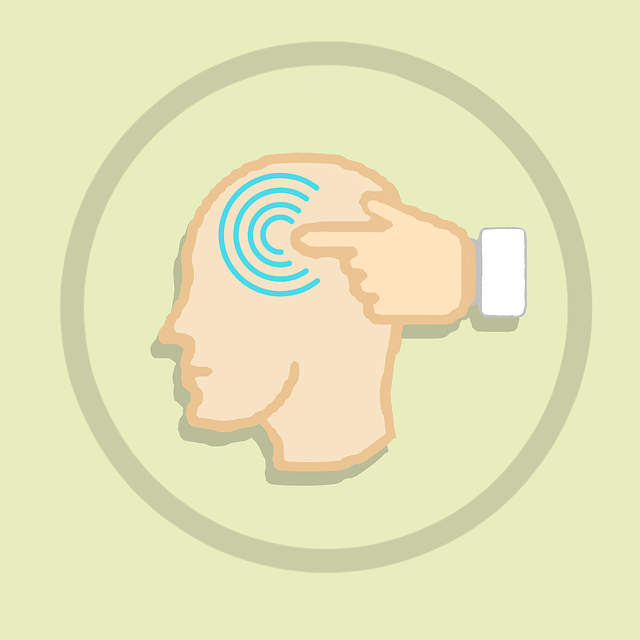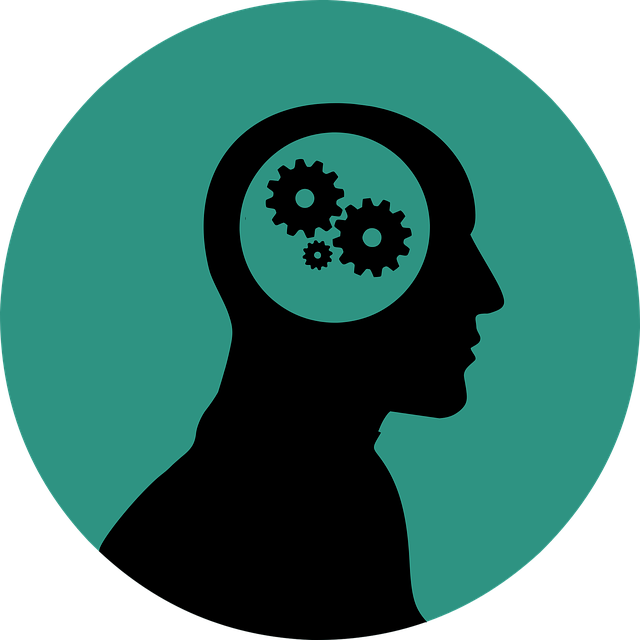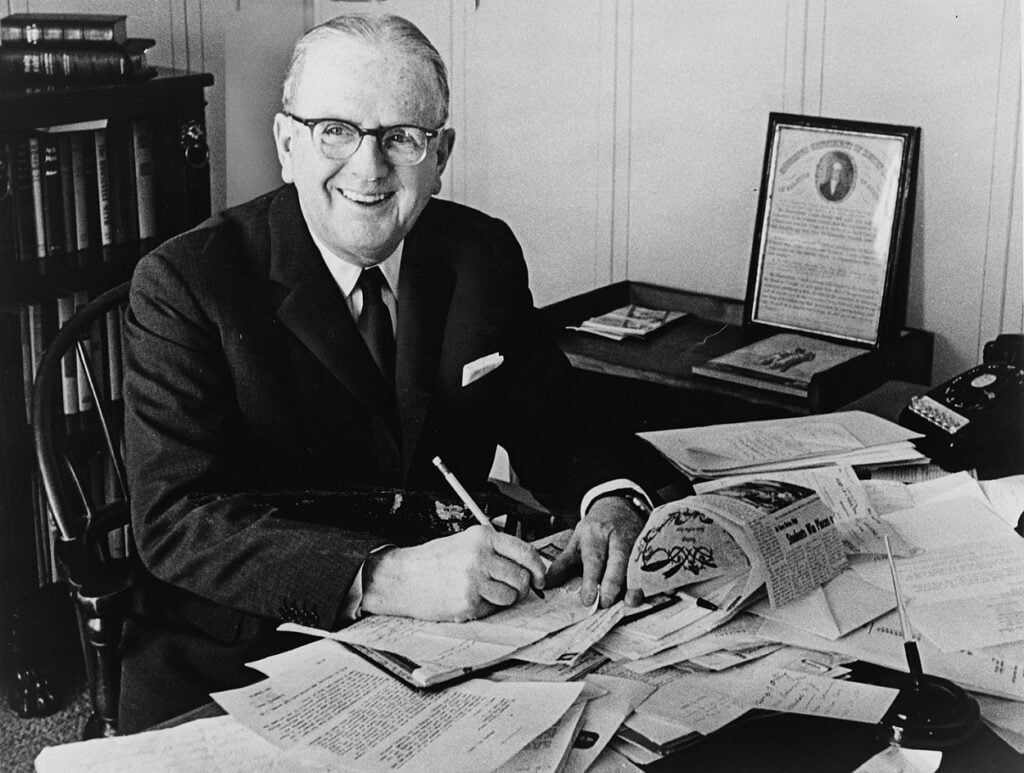“Keep your thoughts positive because your thoughts become your words. Keep your words positive because your words become your actions.”
– Gandhi
People who adopt a positive mental attitude (PMA) are happier and more fulfilled than those who view life negatively. People who adopt this attitude are better prepared to face life’s difficulties. If you also want to adopt positive thinking, here are some tips.
- What is positive thinking?
- Why is it important to adopt a positive mental attitude?
- How to adopt a positive mental attitude?
- Positive thinking and self-confidence
- 14 powerful positive affirmations in the morning or evening to boost your self-confidence and happiness
- The power of positive thinking: what are the benefits of positive thinking?
- Conclusion
What is positive thinking?

The word “positivity” comes from the Latin “possess” which means “to hold on to” or “to take possession of.” Therefore, being positive means taking control of your thoughts and emotions to create your own happiness. It’s about believing in yourself and putting a positive spin on your life. This will allow you to bounce back from failures and build a happier mental state. Essentially, it’s about seeing the good in everything; This is what makes humans so brilliant.
Positive thinking is a way to focus on the good in situations and hope that things will improve. It can help a person feel better during difficult times and manage stress. Positive thinking is also a powerful tool for motivating yourself and achieving your goals.
“A positive attitude is a tremendous driving force. It allows us to overcome enormous obstacles.”
– Nick Vujicic
Many spiritual leaders teach their followers how to think positively and create their own happiness through inspiration or positive thinking. They believe that focusing on the good things in life will make them happier.
Indeed, focusing on good things creates a feeling of joy and well-being in them. It gives us something to look forward to; something we can use to calm our minds while we work hard to better ourselves and our lives.
Positive thinking is a choice!
“Once you choose hope, anything is possible.”
– Christopher Reeve
First of all, you should know that positive thinking is a choice. That is to say, you can choose to see the glass half full or half empty. Next, we must understand that negative thoughts have a negative impact on well-being. Indeed, they can lead to feelings of anger, frustration or despair.
On the contrary, positive thoughts make you feel better about yourself and increase your level of satisfaction.
To adopt a positive mental attitude, you must learn to control your thoughts. This means that when you have a negative thought, you should replace it with a positive thought.
For example, if you say to yourself, “I’m not good enough,” replace that thought with “I can do it.” It is important to know that positive thinking is contagious.
Positive thinking is not just a natural predisposition or an immutable character trait. It is a conscious choice that we make every day. Even when circumstances seem unfavorable or challenges pile up, we have the power to adopt an optimistic outlook.
Cultivating a positive mindset takes effort and discipline, but the rewards are worth it. By choosing to see the glass half full, we breathe positive energy into our lives.
This radiant attitude attracts opportunities, inspires others and gives us the strength to face obstacles with resilience. Positive thinking is a valuable key to leading a fulfilling and rewarding life.
It’s a transformative choice that impacts our happiness, our relationships, and our overall success. Let’s embrace this luminous philosophy, one day at a time, and watch the world light up with the colors of hope and infinite possibilities.
What are the differences between negative thinking and positive thinking?
Negative thinking and positive thinking represent two radically opposed states of mind that profoundly influence our experiences.
👎 Negative thinking is full of doubts, fears and fatalism. It focuses on problems, amplifies difficulties and creates fertile ground for stress and demotivation.
Conversely, positive thinking takes an optimistic and confident outlook. She perceives challenges as opportunities for growth and self-improvement.
Rather than being overwhelmed by the negative aspects, she highlights resources and solutions. Positive thinking is a true driving force that boosts our energy, our creativity and our resilience in the face of adversity. It helps us stay focused on our goals and cultivate a positive attitude towards ourselves and others.
Ultimately, opting for positive thinking is not denying problems, but choosing to approach life with hope, enthusiasm and a constructive outlook, which naturally attracts more positive experiences our way.
The concept of positive thinking

The origins and historical influences of the concept of “positive thinking”.
The term “positive thinking” really became popular at the beginning of the 20th century, notably with the publication of Norman Cousins‘ influential work entitled “Positive Thinkers”. However, the philosophical roots of this concept go back much further in time.
As early as 1809, the book “The Philosophy of Life” by Thomas Lake Palmer, strongly inspired by Ralph Waldo Emerson, one of the most eminent American thinkers of the time, already addressed similar ideas.
Emerson advocated the ability of human beings to transcend their original nature through effort, self-confidence, and spirituality – a philosophy he called the “power of thought.” This belief in the immense potential of the mind to shape reality laid the foundations for positive thinking as we know it today.
If the concept became democratized in the 20th century, it therefore draws its origins from a rich heritage of philosophical wisdom dating back more than two centuries.
Essentially, it is an inward-looking philosophy that focuses on your thoughts and beliefs. It is based on the idea that your thoughts are directly linked to your emotions and behaviors. Therefore, if you are calm and happy, your mind and body will also reflect this state.
“Keep your thoughts positive because your thoughts become your words. Keep your words positive because your words become your behaviors.”
– Lao Tseu
Many people today understand the power of positive thinking. They use it to promote self-confidence, motivation, optimism and determination.
Positive thinking is a set of techniques you can use to promote a positive mindset. These include words, affirmations, visualizations, and self-listening.
👉 This also includes Gandhi’s Law: Always act as if you are happy, healthy, intelligent and divinely loved!
The concept of using the power of thought began with Eastern philosophy such as Buddhism and Hinduism.
However, it gained popularity in the 20th century with self-help books like Wayne Dyer’s Book into Film: The Magic Mind Cure.
Positive thinking: two laws of the power of the mind
Wayne Dyer, the renowned author and speaker, has contributed greatly to disseminating two fundamental laws of the power of the mind.
👉 First, “belief is powerful”. Our deep beliefs shape our reality. When we firmly believe in our abilities, nothing seems impossible. This unwavering faith becomes a catalyst that unlocks our potential and allows us to accomplish extraordinary things.
👉 The second law is “Think about it or do it”. Whether we visualize a goal in thought or realize it in action, the results obtained are similar according to Dyer. Our thoughts have a direct impact on our experiences. By imbuing our mind with positive images and intentions, we program our subconscious to attract these realities into our existence.
Through these teachings, Wayne Dyer imparted to his fans the profound wisdom of the power of the mind. By cultivating elevated beliefs and positive thinking, we unlock our incredible inner potential to perform true “acts of magic”: healing, creating abundance, transforming our lives. The mind becomes a powerful tool for shaping our destiny according to our highest aspirations.
Why is it important to adopt a positive mental attitude?

Here are some important reasons why it is beneficial to adopt a positive mental attitude:
A positive attitude builds self-confidence and motivation. When we approach life with optimism, we feel more in control and we dare to set new challenges. This confidence in our abilities pushes us to give the best of ourselves.
Positive thinking impacts our emotional well-being. It reduces stress, anxiety and overwhelming negative thoughts. We feel lighter, joyful and fulfilled when we see the glass half full.
A positive mentality colors our relationships. We give off an attractive energy that facilitates connections with others. Those around us appreciate our comforting presence and our ability to put things into perspective.
Optimism increases resilience in the face of difficulties. Instead of being overwhelmed by problems, we see them as challenges to overcome. This mental strength allows you to bounce back faster.
Finally, positive thinking is a source of creativity and opportunities. We remain open to new ideas and possibilities. This open-mindedness attracts more opportunities in our life.
Also read: Beautiful Quotes Positive Life + Motivation Messages
How to adopt a positive mental attitude?
The power of positive thinking Norman Vincent Peale

Act as if you have a life full of enthusiasm, health, talent and joy: you will eventually have them.
Norman Vincent Peale
In Peale’s original title for his book, How to Win Friends and Influence People, he intended ‘how people use their minds correctly.’ Essentially, by focusing on what you want in life and avoiding negative thoughts, you can greatly influence your own mental state.
This can greatly increase both your self-confidence and your performance in all areas of life. When considering applying positive thinking techniques to your life, consider the following proven elements and behaviors:
- Positive comparison techniques
- Positive reminiscence techniques
- Positive concentration techniques.
1. 1: Positive comparison techniques
The first is known as “comparative thinking.” This involves identifying what you have in life and how it compares to others.
Positive comparison example:
You may be struggling financially, but you may also have a comfortable home and a stable job. Or you may feel unattractive or unappreciated in some ways, but you also know that many other people feel the same way about themselves.
By comparing your situations with those of others who have less than ideal circumstances, you can get a better idea of your own situation. This can help motivate you to take positive steps to improve your situation.
1. 2: Positive reminiscence techniques
The second form of positive thinking is known as “reminiscence thinking.” It’s about reliving with renewed freshness the pleasant moments from past experiences. This practice involves specifically identifying the elements of the past that gave you the most joy and well-being, then associating them with similar situations in the present.
Positive reminiscence example:
To illustrate, imagine that you are going through a period of discouragement. You might then remember a time when someone showed you deep kindness and sincere support. Reviving this sweet reminiscence would remind you that there are people who actually care about you in life.
Nourished by this positive memory, it would then become easier to undertake concrete actions to once again cultivate warm and fulfilling relationships with those around you.
Reminiscence thinking is a powerful tool for tapping into positive emotional resources from your past in order to calm the present and move forward with an optimistic attitude.
It’s diving back into the inexhaustible source of your good memories to recharge your batteries and face current challenges with renewed energy.
1. 3: Positive Focus Techniques
The third is known as “concentration thinking.” This involves focusing on one goal at a time and ignoring all other distractions. When you are deeply focused on a single task, many mental benefits occur simultaneously.
It increases your powers of concentration; calms your mind; sharpens your thinking skills; and solidifies and strengthens your will. Essentially, when you focus directly on one thing, it opens many mental doors for you in return.
Personal growth and fulfillment: the term “thinking”
In the realm of personal growth and fulfillment, the term “think” has deep meaning. It is not just an abstract mental process, but a creative and transformative act. To think is to give birth to ideas, concepts, visions which have the power to shape our reality. It is a powerful tool for shaping our experiences and our life path according to our highest aspirations.
When we think positively and constructively, we infuse caring energy into our consciousness. Our thoughts then become driving forces that attract opportunities, stimulate our motivation and strengthen our self-confidence.
Every positive thought is a seed that, carefully cultivated, can blossom into concrete achievements and fulfilling accomplishments.
To think is to use our inner creativity to imagine, dream, project what we want to happen in our existence. It is the key opening the doors to abundance, lasting happiness and self-fulfillment on all levels. Mastering the art of positive thinking means gaining immense power to transform our lives according to our noblest ideals.
In other words, it includes both our mental processes and our ability to consider various ideas simultaneously without being influenced by emotions or personal biases. Maintaining an optimistic mindset throughout life requires that we continually work to improve our mental habits through the actively applied thought processes described above.
Also read: Tips for success in life : Social- Financially (+Quotes)
2. The Law of Attraction
One of the most popular techniques in the world of positivity is called the law of attraction. It basically states that our thoughts create our reality – so if you are happy, you will automatically be prosperous.
Positive thinking also helps us visualize what we want in life; this is how we create our own realities. This can be used to improve our lives in many ways, from relationships to career to material possessions.
3. Mindfulness meditation
This essentially involves focusing your attention on your breathing and mindfulness while you are sitting or walking. You also need to learn to listen to your body so that you can calm your mind and body at the same time.
After doing this for a while, you will develop mental control over your mind-body tensions. This will make you feel peaceful, stable, alert and lucid while performing all daily tasks such as walking or eating mindfully.
4. Think about what makes us happy
“Think positively and positive things will happen.”
– Pat Riley
To avoid focusing on the things we don’t like and having the wrong attitude, it’s important to think about what makes us happy.
In other words, we must confront our recent positive emotions, those that give us pleasure, those with which we have worked brilliantly or even those which have given us great personal satisfaction.
5. Wander around to find niches of joy
If we seek to rejoice in small joys, it is important to build positive connections with our fellow human beings. This is why, as much as possible, it is advisable to walk around and meet people.
In addition, it is important to find activities that will give us pleasure and which will bring us discoveries.
6. Fall asleep with positive thoughts
To be able to concentrate and think positively at all times, it is recommended to get a good night’s sleep.
While sleeping, the mind makes plans for the next day and thinks about the problems and positive things we are going to tackle.
Write down what you want to achieve
Positive thinking can also be practiced by writing down what you want to accomplish in a journal, reading positive affirmations, surrounding your environment with positivity, maintaining healthy social relationships, exercising, and getting enough sleep. . These activities help eliminate negative thoughts.
Positive thinking and self-confidence
Self-confidence is the ability to believe in one’s own qualities, skills and abilities. It allows you to feel capable of facing life’s challenges and opportunities. Self-confidence is often linked to positive thinking, because the more you think positively, the more you strengthen your self-esteem and self-confidence.
“The most rewarding adventure you can undertake is to believe in yourself.”
– Warren Miller
Tips for developing positive thinking and self-confidence:
- Replace negative thoughts with positive ones. Whenever you find yourself having a negative thought, such as “I’m not good enough”, “I’m not going to make it”, “I’m unlucky”, etc., try replacing it with a negative thought. positive thinking, such as “I am capable”, “I will do my best”, “I create my own luck”, etc.
- Make a list of your qualities, your successes and your progress. Take the time to recognize your strengths, talents and accomplishments. Write them down on paper or in a journal and reread them regularly. This will help you realize your worth and build your self-confidence.
- Set realistic and positive goals. Having clear and motivating objectives will allow you to direct yourself towards what you want to achieve and measure your progress. Choose objectives that are adapted to your level, your needs and your desires. Phrase them in a positive way, using words like “I want”, “I can”, “I will”, etc.
- Celebrate your successes and learn from your failures. Every time you accomplish something, congratulate and reward yourself. This will encourage you to continue and improve. If you encounter difficulties or failures, do not get discouraged or criticize yourself. On the contrary, analyze what went wrong and learn from it for next time.
- Surround yourself with positive and caring people. People who support you, who encourage you and who appreciate you are essential for your self-confidence. They will help you see the positive in yourself and in life. Avoid people who put you down, judge you, or discourage you. They will only undermine your self-esteem and self-confidence.
14 powerful positive affirmations in the morning or evening to boost your self-confidence and happiness
- I am capable of achieving anything I set my mind to.
- I am proud of who I am and what I have accomplished.
- I deserve the respect, love and gratitude of others.
- I am surrounded by people who support and value me.
- I am responsible for my life and my choices.
- I face challenges with courage and optimism.
- I free myself from everything that no longer serves me or that prevents me from moving forward.
- I focus on the positive and let go of the negative.
- I take care of my body, my mind and my soul.
- I accept and love myself as I am, with my strengths and weaknesses.
- I am creative and express my unique personality.
- I am grateful for everything I have and all the opportunities that come my way.
- I am in harmony with myself and with the universe.
- I radiate joy, peace and happiness.
These affirmations can help you feel more positive, more confident, and more fulfilled. You can repeat them every day, in the morning or evening, or whenever you feel the need.
You can also write them on post-its or cards and place them in places where you will see them often. The important thing is to say them with conviction and sincerity, soaking up their energy.
The more you repeat them, the more you will integrate them into your subconscious and the more you will see positive changes in your life. 😊
The power of positive thinking: what are the benefits of positive thinking?
Positive thinking is a powerful tool that can help you transform your life. It allows you to focus on the best of yourself and what you want to achieve. By focusing on the positive, you attract more positivity into your life.
It also helps you manage stress and better manage negative emotions. Positive thinking allows you to develop a more optimistic attitude and better face life’s challenges.
We should value our thoughts because they help us maintain a positive outlook on life. However, focusing on the bad things makes us feel worse; it is not practical or useful for human development or happiness.
Instead, we should focus on what makes us happy; this includes forming friendships, finding love, and enjoying our daily lives without regretting what happened yesterday or worrying about tomorrow.
Also read: Poem about life: “The quest for happiness”
Conclusion
According to several experts, positive thinking is a mental well-being technique that involves focusing on positive thoughts and feelings. This technique helps reduce stress and anxiety, and can even help improve physical health.
Positive thinking can be done in different ways, but one of the most effective is to visualize yourself achieving your goals. It may seem simple, but by focusing on positive images of yourself, you can begin to change the way you think and feel, and achieve your goals.
This can help you develop a strong self-image that promotes happiness throughout your life!
Therefore, implementing these techniques into your daily life will definitely make you happier! 🙂
“Believe in yourself and anything is possible.”
– Christopher Reeve
Generally speaking, believing in ourselves and valuing our thoughts can make us happy. It helps us see the good things in life and makes us more confident. It also helps us see the beautiful parts of other people’s lives.
It also helps us work on our problems and maintain a positive attitude towards life’s difficulties. Ultimately, believing in ourselves leads to greater happiness and well-being.



